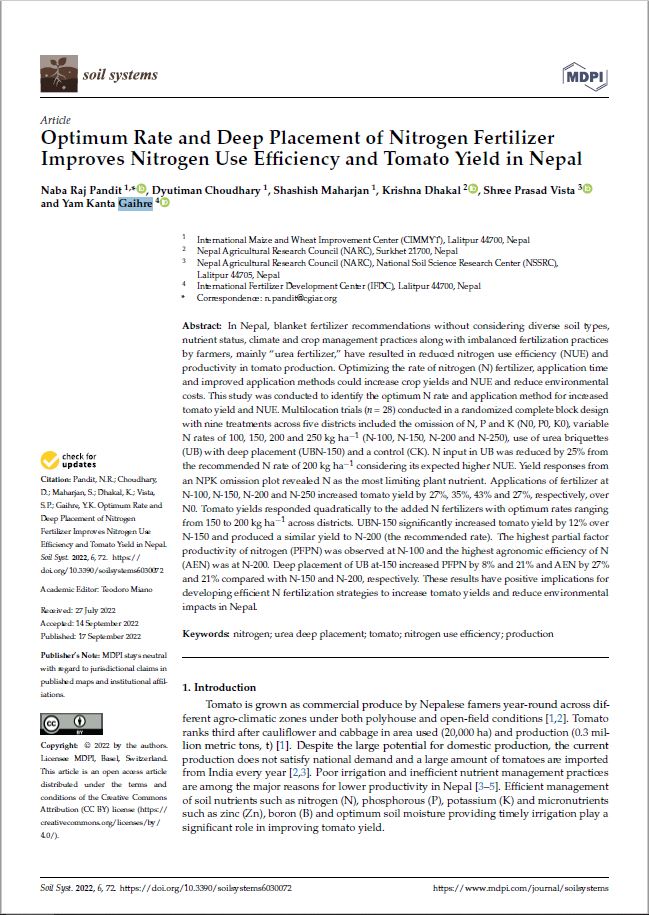In Nepal, blanket fertilizer recommendations without considering diverse soil types, nutrient status, climate and crop management practices along with imbalanced fertilization practices by farmers, mainly “urea fertilizer,” have resulted in reduced nitrogen use efficiency (NUE) and productivity in tomato production. Optimizing the rate of nitrogen (N) fertilizer, application time and improved application methods could increase crop yields and NUE and reduce environmental costs. This study was conducted to identify the optimum N rate and application method for increased tomato yield and NUE. Multilocation trials (n = 28) conducted in a randomized complete block design with nine treatments across five districts included the omission of N, P and K (N0, P0, K0), variable N rates of 100, 150, 200 and 250 kg ha−1 (N-100, N-150, N-200 and N-250), use of urea briquettes (UB) with deep placement (UBN-150) and a control (CK). N input in UB was reduced by 25% from the recommended N rate of 200 kg ha−1 considering its expected higher NUE. Yield responses from an NPK omission plot revealed N as the most limiting plant nutrient. Applications of fertilizer at N-100, N-150, N-200 and N-250 increased tomato yield by 27%, 35%, 43% and 27%, respectively, over N0. Tomato yields responded quadratically to the added N fertilizers with optimum rates ranging from 150 to 200 kg ha−1 across districts. UBN-150 significantly increased tomato yield by 12% over N-150 and produced a similar yield to N-200 (the recommended rate). The highest partial factor productivity of nitrogen (PFPN) was observed at N-100 and the highest agronomic efficiency of N (AEN) was at N-200. Deep placement of UB at-150 increased PFPN by 8% and 21% and AEN by 27% and 21% compared with N-150 and N-200, respectively. These results have positive implications for developing efficient N fertilization strategies to increase tomato yields and reduce environmental impacts in Nepal.

